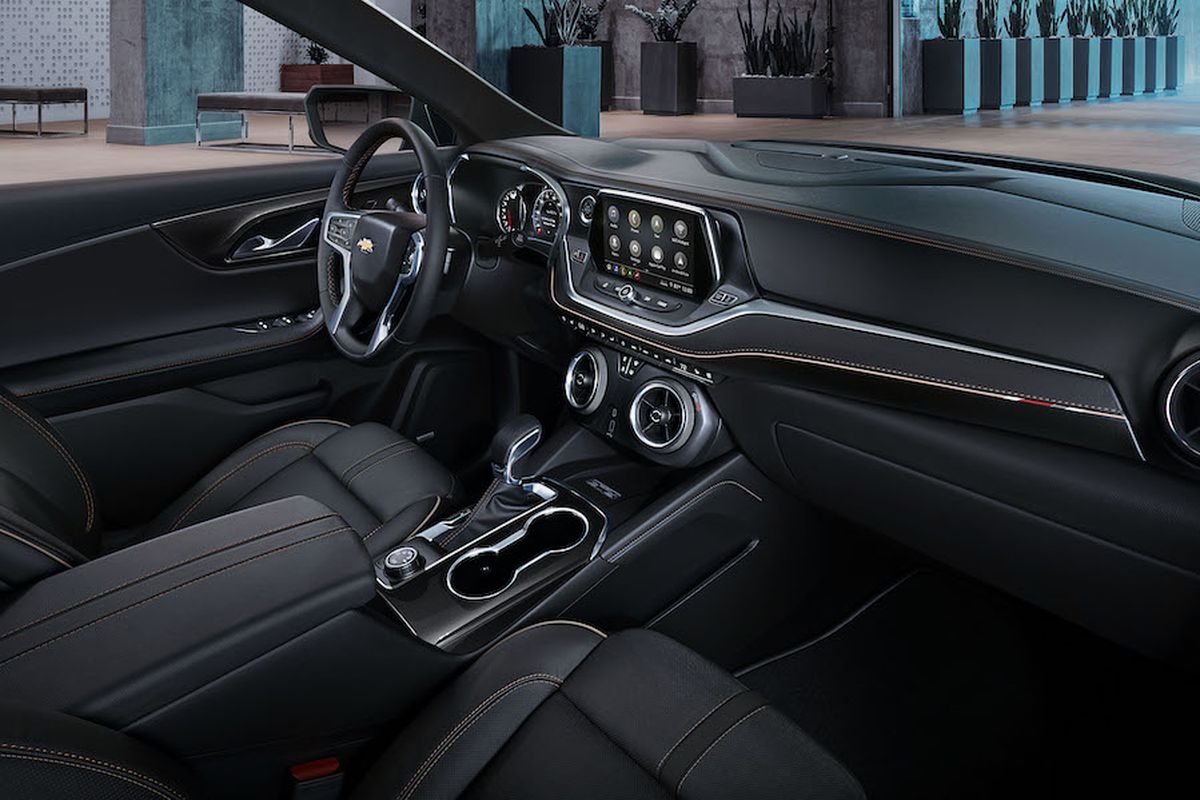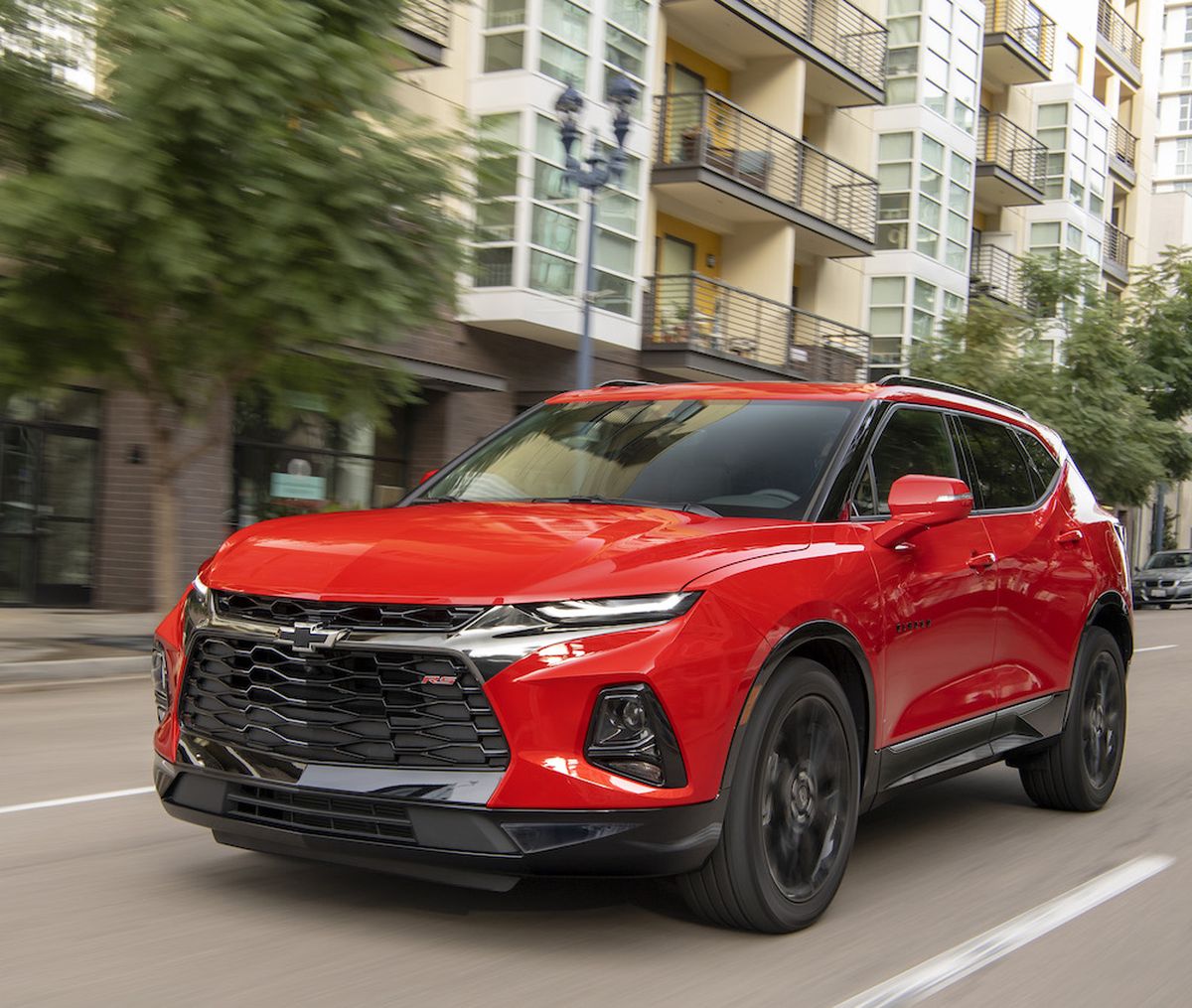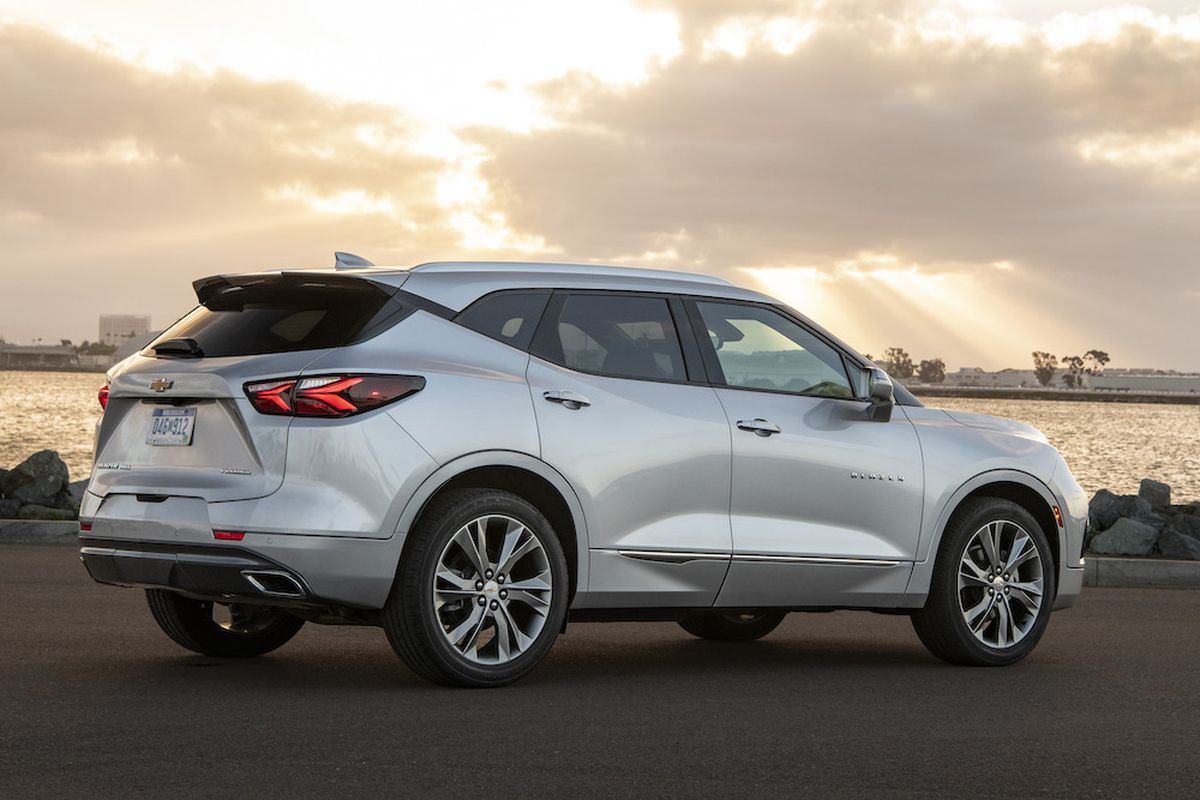2021 Chevrolet Blazer: Beloved SUV nameplate migrates to the crossover side of the ledger
The new Blazer is a stylish, five-person CUV that slots between the Equinox and the Traverse. It offers engaging dynamics and a choice of three engines. I (Chevrolet)
Over the years, Chevrolet has gotten plenty of mileage from the Blazer nameplate.
Blazer debuted in 1969 as a full-size, truck-based SUV. It has been shrinking ever since: That first large SUV was followed by a compact/midsize version before leaving the market in 2005.
Two years ago, Chevy resurrected the nameplate and assigned it to its new midsize crossover.
That choice caused heartburn for Blazer loyalists who wanted Chevy to save the name for a true sport-ute.
Camaro-inflected
Instead, the new Blazer is a stylish, five-person CUV that slots between the Equinox and the Traverse. It offers engaging dynamics and a choice of three engines. It takes design cues from the Camaro coupe; look closely and you’ll see Camaro in the egg-crate grille and squinty HID headlights (LEDs are available).
The Camaro influence is also felt inside, most notably in the round, aircraft-style A/C vents and heavy application of metal-look trim.
The new Blazer looks lively and, in fact, is lively. It’s one of the more fun-to-drive crossovers we’ve driven, especially in the RS trim we tested.
The Blazer is available in six trims: L ($26,995); 1LT ($33,495); 2LT ($34,795); 3LT ($38,495); RS ($41,995); and Premier ($43,695).
Engine choices include a 2.5-liter four that makes 193 horsepower; a turbocharged 2.0-liter four that makes 230 hp; and a 3.6-liter V-6 that makes 308 hp.
All engines are mated to a nine-speed automatic transmission.
RS strong and agile
Front-wheel drive is standard; AWD is available on all trims but the L and 1LT.
The RS gets the V-8, sport-tuned steering and suspension and the more sophisticated of Blazer’s two available AWD systems. Its torque-vectoring rear axle sends power as needed to the individual rear wheels, improving traction and handling.
The eight runs strong and smooth, with a fat torque curve and a raspy note at high rpms. The transmission is a bit slow to downshift when instant acceleration is needed but otherwise shifted cleanly.
The RS runs the 0-60 sprint in 6.3 seconds.
Four-cylinder models can tow up to 1,500 pounds; V-6 versions are good to 4,500 pounds.
At speed, the RS feels buttoned-down and responsive. Its firm suspension checks unwanted body motions and the RS handles corners and quick transitions with composure and modest body lean. The torque-vectoring rear axle helps the RS rotate on its axis and boosts stability in the corners.
The RS rides on 21-inch wheels that looked good but didn’t do much to filter out a pothole’s jarring impact.
Otherwise, our tester effectively balanced performance and comfort. Steering is well-weighted, precise and surprisingly communicative. Testers who have driven the lower trims say they are engaging as well.
User-friendly infotainment
Blazer’s exuberant sheet metal includes a high beltline and low roofline, which together block sightlines and reduce rear-seat headroom and cargo capacity.
Even so, the second-row seats offer lots of legroom.
I easily found a comfortable driving position, though the seat cushions are smaller and less supportive than the segment’s best.
The upper dash is edged with a stitched soft-touch material but most surfaces are hard plastic. Uneven panel gaps and sub-par materials quality felt especially out of place on our high-end tester.
Every Blazer comes with an 8.0-inch infotainment touchscreen. The user-friendly system includes Apple CarPlay and Android Auto compatibility. The Blazer also can be equipped with a Wi-Fi hotspot, eight-speaker Bose audio system, built-in navigation and wireless phone charging.
All Blazers above the base L are available with blind-spot warning, rear cross-traffic warning, and rear parking sensors.
The vents rotate to raise and lower the temperature of the air flowing through them. Unfortunately, the principal vents are located low in the dash and are directed at the knees of front-seat passengers.
Chevy’s Safety Assist package is standard on 2LT, 3LT, RS and Premier. It includes automatic emergency braking, front pedestrian braking, lane keep assist with lane departure warning, following distance indicator, forward collision alert and automatic high-beam control.
It’s not the sport-ute traditionalists hoped for, but the 2021 Blazer will make a home for itself on the crossover side of the ledger.
Questions or comments? Contact Don at don@dadair.com.
2021 Chevrolet Blazer RS AWD
Vehicle base price: $26,995
Trim level base price: $41,995
As tested: $48,380 (includes destination and handling)
Options: ventilated front seats; heated rear seats; memory settings; power tilt-and-telescoping steering wheel; Bose premium audio; rear camera monitor with washer; wireless charging; adaptive cruise control; LED headlamps; enhanced automatic emergency braking; HD surround vision; cargo area organizer; front console organizer
Tow rating: up to 4,500 pounds
EPA rating: 21 combined/19 city/26 highway




